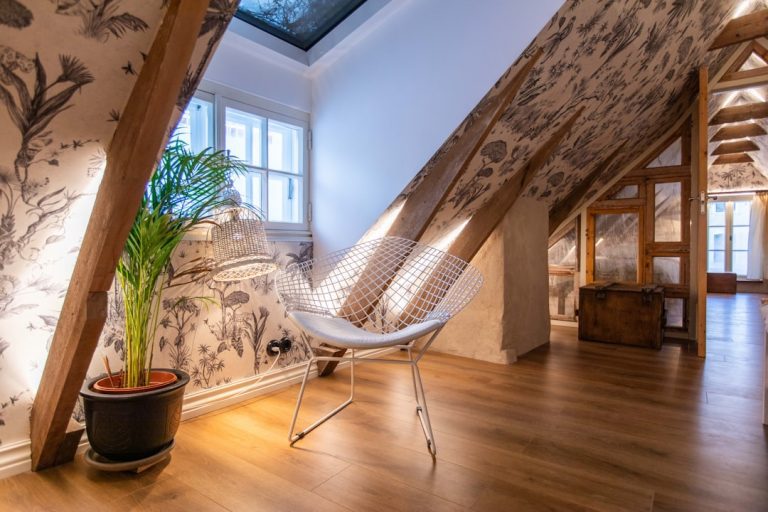Creating a home that feels both stylish and sustainable is one of the most rewarding goals for modern homeowners in the UK. As awareness grows about eco-friendly living, more people are discovering that sustainability and comfort can coexist beautifully. From natural fabrics to multifunctional design, thoughtful changes can turn any living space into a warm, responsible, and timeless retreat.
1. Choose Natural Fabrics for a Softer Touch
Sustainable comfort often starts with texture. Natural materials such as linen, cotton, and wool provide warmth while allowing the space to breathe. They not only feel pleasant against the skin but also help regulate temperature throughout the year. Textiles made from renewable fibers have a smaller environmental impact and age gracefully over time.
An excellent way to embrace this idea is to discover the way to refresh your living room with fabric updates. Replacing synthetic materials with natural fabrics can instantly elevate the atmosphere of your home. Whether it is a new set of slipcovers, cushions, or curtains, these small updates bring visual harmony and a sense of calm, creating an environment that feels authentically cozy yet modern.
2. Let Natural Light Set the Mood
Few design elements affect comfort as much as light. Maximizing natural daylight not only reduces energy consumption but also enhances mood and well-being. Keep your windows unobstructed and use light, airy curtains to let the sunshine in. For the darker months, choose warm-toned LED bulbs that mimic natural light. Adding mirrors strategically can help bounce brightness around the room, giving even compact spaces an open and refreshing feel.
To strengthen the ambiance further, layer lighting sources. Combine floor lamps, pendant fixtures, and wall sconces to create a balanced glow. The key is flexibility: soft lighting for relaxation, brighter tones for productivity, and accent lighting to highlight your favorite corners or décor pieces.
3. Invest in Timeless Furniture
Sustainability is not only about the materials you use but also about longevity. Opt for furniture that lasts. A well-built sofa, solid wood dining table, or sturdy bookshelf will remain functional for years while saving waste from disposable trends. Choosing timeless shapes and neutral colors allows you to refresh your style later with minimal changes — a new fabric cover, throw, or rug can transform the mood instantly.
Buying from local artisans or certified sustainable brands supports responsible craftsmanship. Each piece carries a story and adds character to your home. Think of furniture as an investment in quality of life, not just an object of convenience.
4. Incorporate Indoor Plants for Natural Vitality
Nothing brings life into a room quite like greenery. Indoor plants purify the air, regulate humidity, and provide visual balance. For low-maintenance options, try snake plants, peace lilies, or spider plants. Grouping plants of different heights can add a sculptural feel, turning an empty corner into a relaxing sanctuary.
Pair plants with ceramic or woven pots for a tactile, earthy aesthetic. Besides improving air quality, plants remind us of our connection to nature and add an organic rhythm to the home, a fundamental element of sustainable living.
5. Reuse, Repurpose, and Rethink
Before buying new décor items, look at what you already have. Could that old chair be reupholstered? Can an unused ladder become a stylish shelf? Creative repurposing saves money and reduces waste. Local charity shops or vintage markets often have beautiful items waiting for a second life.
By embracing a circular mindset, your home becomes not only visually appealing but also ethically grounded. Each reused object adds charm and history, reflecting your personality more than any mass-produced piece could.
6. Create a Sense of Warmth Through Layering
Layering is a design principle that instantly makes any home feel welcoming. Combine different materials and textures to achieve depth, think knitted throws on a linen sofa, or a wool rug under a wooden coffee table. Balance is key: too many layers can overwhelm, but the right amount adds dimension and tactile pleasure.
Layering can also be applied to color. Earthy neutrals like clay, beige, and olive pair beautifully with deeper tones such as navy or charcoal. These combinations create a grounded and timeless palette that enhances the feeling of serenity in any modern home.
7. Choose Energy-Efficient Solutions
Comfort and sustainability go hand in hand when energy efficiency is part of the design. Modern technologies like smart thermostats, insulated curtains, and LED lighting help you control energy use without sacrificing comfort. In the UK’s unpredictable climate, efficient insulation and proper ventilation are key to maintaining warmth in winter and coolness in summer.
Even small upgrades switching to low-energy bulbs, sealing window gaps, or using draft excluders, can make a noticeable difference. Sustainability often lies in the everyday habits that make your home both eco-friendly and economical.
8. Focus on Ethical Décor Choices
When selecting décor, consider where and how it was made. Items created with ethical labor practices and sustainable materials carry more meaning and integrity. Look for certifications like FSC for wood products or OEKO-TEX for textiles to ensure minimal environmental impact.
Supporting small local designers also helps sustain community craftsmanship. Handmade ceramics, recycled glass vases, and handwoven cushions tell a story of care and intention, bringing authenticity and charm into your living space.
9. Make Space for Calm and Reflection
A truly comfortable home has areas dedicated to relaxation. Create a quiet reading nook near a window, a small meditation space, or a cozy corner where you can unwind after a long day. Add soft textures, a blanket, and a warm lamp to make it inviting.
Minimal clutter is essential here. Studies show that a tidy environment contributes to mental calmness. Keeping only meaningful items nearby encourages mindfulness and balance. When your surroundings are peaceful, it becomes easier to recharge and feel at home.
10. Enjoy the Simplicity of Living Sustainably
Sustainable comfort is not about perfection but progress. Every thoughtful decision, from choosing a reusable product to opting for natural fabrics, shapes a home that supports well-being and reduces environmental impact. Over time, these choices become second nature, creating an environment that feels harmonious and alive.
Sustainability invites us to slow down and appreciate what we have. It is a lifestyle rooted in balance between beauty and practicality, between the needs of today and the responsibility for tomorrow. In doing so, you create a home that not only looks good but feels deeply good to live in.
Conclusion
Building comfort and character in your home does not require endless consumption. By embracing natural materials, thoughtful lighting, and timeless design, you can create a space that reflects your values while nurturing your well-being. Sustainability, at its core, is about creating homes that stand the test of time — beautiful, functional, and filled with meaning.


